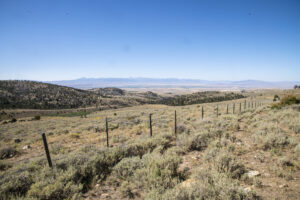
The Whitledges bought the property to expand their existing business. The Peoria Journal Star reports a four-stage plan was put in place to build a warehouse and distribution center, a retail store, fields for large-scale flower production, and finally a few display gardens to showcase tall-grass prairie. That afterthought has now become the cornerstone of a growing business in native prairie plants and entire tall-grass prairie landscapes.
Seeds planted just six years ago have already produced a robust and functioning prairie ecosystem. A pond on the property that was once thick with algae is now crystal clear. Water that once gushed out of drainage tiles from neighboring farm fields is completely absorbed by the burgeoning prairie. Meadowlarks and bobwhites, birds listed by the Audubon Society as declining in number, are settling into the protective switch grass. Other birds, including pheasants, blue herons, prairie sparrows, wrens, barn swallows, blue birds, and killdeer, are also adopting this small patch of tall-grass prairie.
The birds are a delight to the Whitledges, bringing life, color, and song to land that was once a mono-culture. The birds also have healthy appetites, which has been a blessing in disguise. While most residents of central Illinois suffer through the summer swatting mosquitoes, Jerry and Teri are relatively free of the pesky insects.
The Whitledges’ land not only attracts birds, but also lots of people from nearby towns. The more they learn about the grasses, forbs, and flowers, the more they appreciate the prairie that once spread across millions of acres, providing wildlife habitat, soaking up the rain, and protecting the soil with six-foot-deep roots.
Originally meant only as displays, the tall-grass prairie gardens have become a valuable educational tool. More and more people are abandoning their flashy zinnias and geraniums in favor of the subtle hues and ecological benefits of heliopsis, purple love grass, and other prairie plants. What Jerry thought would never happen has happened. Tall-grass prairie has gone commercial.


